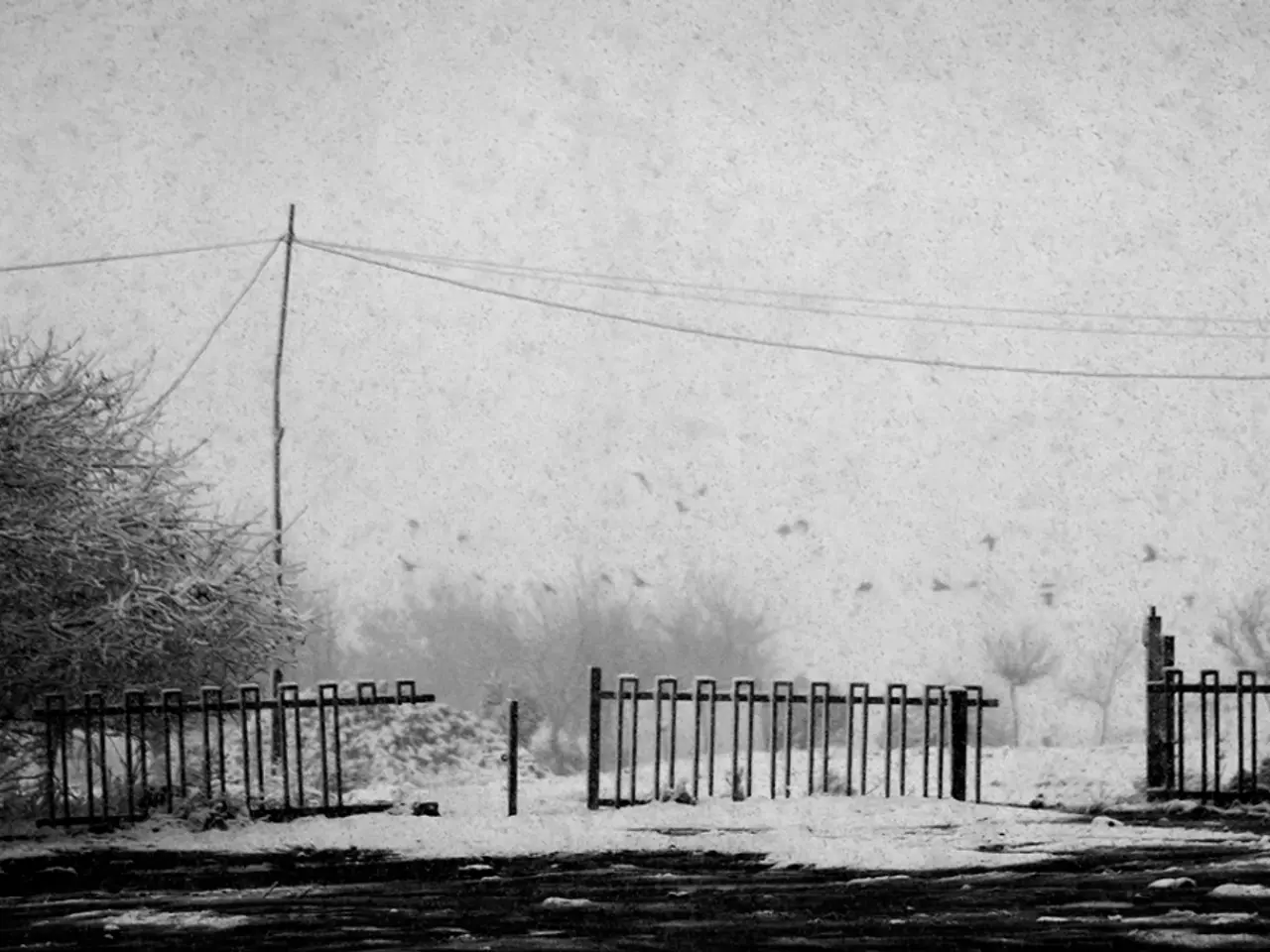In an Unexpected Twist: Navigating a Fire Whirlwind's Path Instantly
Fire tornadoes, also known as fire whirls or firenados, are rare but extremely dangerous meteorological phenomena that can occur during large wildfires. These swirling columns of flames and intense heat can reach hundreds of feet into the sky, causing significant destruction in their path.
The Formation of Fire Tornadoes
Fire tornadoes form when intense surface heat from a wildfire causes air to rise rapidly, combined with variable wind directions and speeds that generate horizontal and vertical wind shears. Topographic features and obstacles can concentrate and channel these winds, helping to form a rotating column of fire and air.
Climate factors such as drought, high temperatures, and dryness of vegetation increase wildfire risks and the potential for fire tornado formation. These conditions are becoming increasingly common due to climate change, which lengthens fire seasons and increases the severity of wildfires by causing drier fuels and more frequent heat waves and droughts.
Preparation and Safety Measures
Preparation for fire tornadoes in wildfire-prone areas involves general wildfire readiness and awareness of severe fire phenomena. This includes creating defensible space by removing flammable materials around homes, following local evacuation orders promptly, and maintaining emergency supplies and communication plans.
If a fire tornado or extreme fire activity approaches, safety steps include evacuating early, avoiding low-lying areas prone to fire spread and embers, and having an evacuation route planned. Shelter options are limited due to the intensity and unpredictability of fire tornadoes, so evacuation is preferred.
Safety Measures During a Fire Tornado
If you're in a car during a fire tornado, seek shelter in a sturdy building or low-lying area as soon as possible. Attempting to outrun a fire tornado can be extremely dangerous and is not recommended. In the event of an approaching fire tornado, quick decision-making can be critical to survival.
To protect yourself from smoke inhalation during a fire tornado, stay as low to the ground as possible, cover your nose and mouth with a damp cloth, and close all windows and doors to prevent smoke from entering. If you cannot find immediate shelter, remain in your car with the windows closed.
Understanding the Dangers of Fire Tornadoes
Understanding the dangers posed by fire tornadoes is crucial for anyone living in wildfire-prone areas. A fire tornado can reach hundreds of feet in width, with wind speeds exceeding 140 mph, internal temperatures around 2,700 degrees Fahrenheit, and a tall rotating column that extends miles into the atmosphere. They often create their own weather, including pyrocumulonimbus clouds—a thunderstorm-like cloud formed by the extreme heat and rising smoke that can intensify the tornado's strength by fueling the updraft, pulling in embers and debris, and causing widespread destruction.
Fire tornadoes differ from smaller fire whirls by having a strong central updraft and sustained rotation, which can uproot trees, shear structures, and obliterate neighborhoods. These intense vortices can persist for much longer periods than traditional tornadoes, fueled by the ongoing heat and energy released by the surrounding wildfire.
In the event of a fire tornado, being prepared and informed can make all the difference in ensuring safety and survival. If suddenly caught in the path of a fire tornado, the first priority should be to seek shelter and protect oneself from the intense heat and flames.
In times of crisis, staying informed is essential for making informed decisions and taking appropriate action to ensure safety. Monitor weather conditions, especially during high-risk periods with dry fuels and unstable wind patterns, and follow the instructions of emergency responders and local authorities.
By understanding the formation, characteristics, and dangers of fire tornadoes, and by taking appropriate preparation and safety measures, residents of wildfire-prone areas can reduce their risk and increase their chances of surviving these rare but destructive phenomena.
- Climate change contributes to the increased risks of fire tornado formation by lengthening fire seasons and increasing the severity of wildfires.
- Evacuation is preferred over shelter during a fire tornado due to the intensity and unpredictability of these phenomena.
- Sports-betting websites may not have real-time updates on weather conditions that could contribute to the formation of fire tornadoes in wildfire-prone areas.
- Environmental science plays a crucial role in understanding the formation, dangers, and mitigation strategy for fire tornadoes, contributing to general-news discussions on climate change and wildfire risks.






